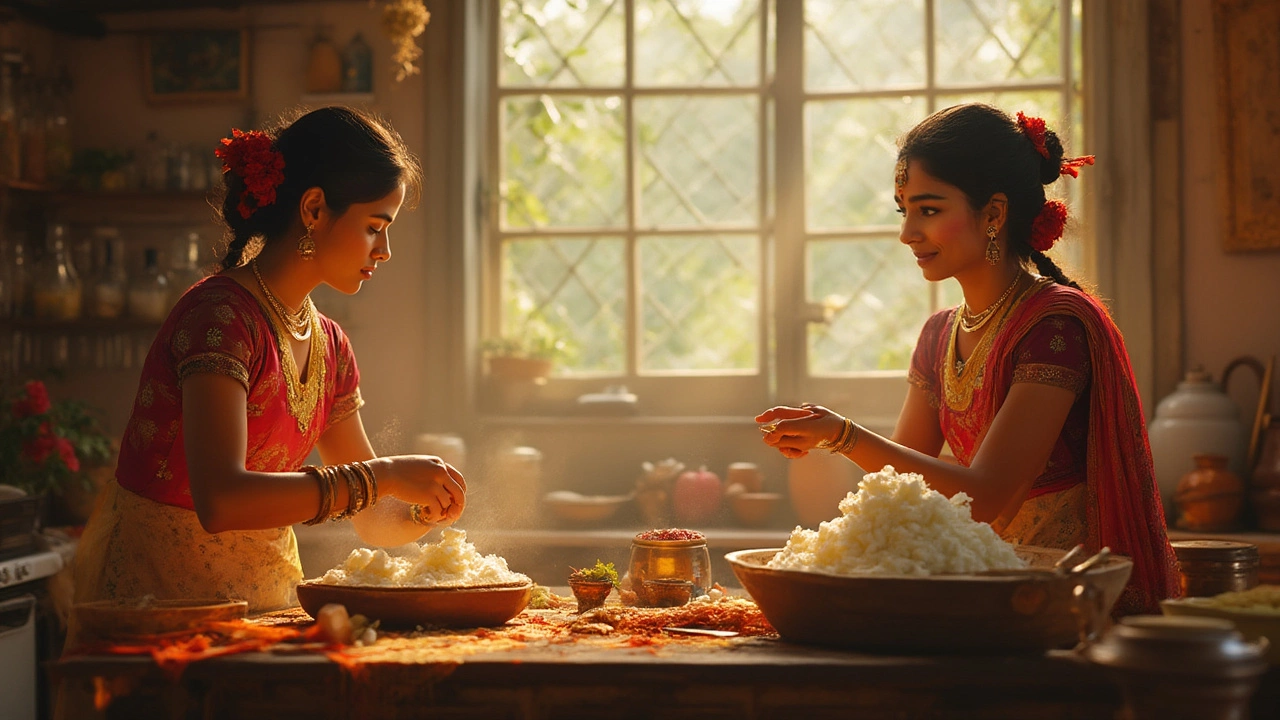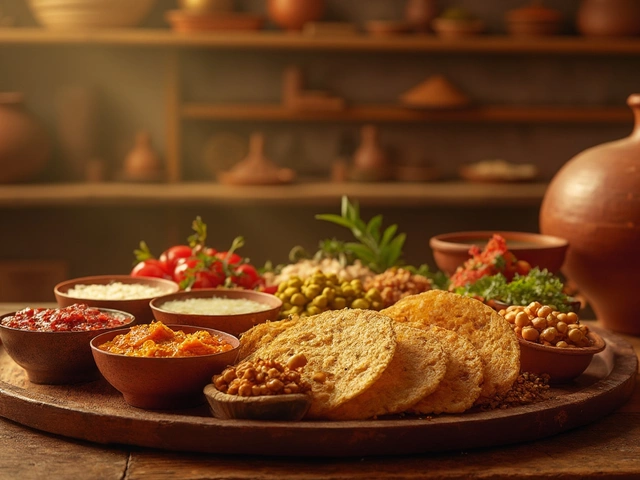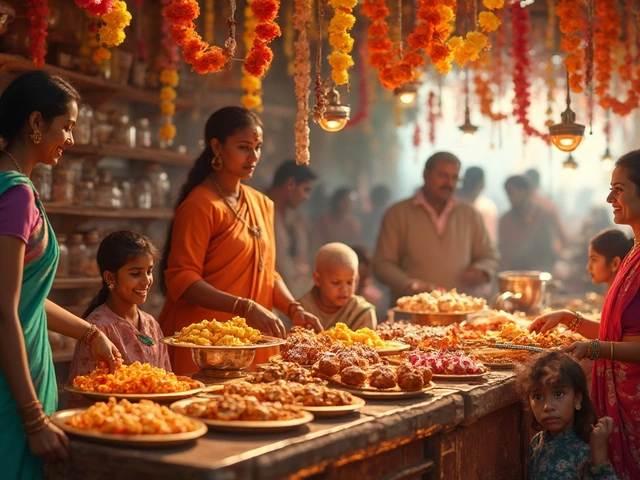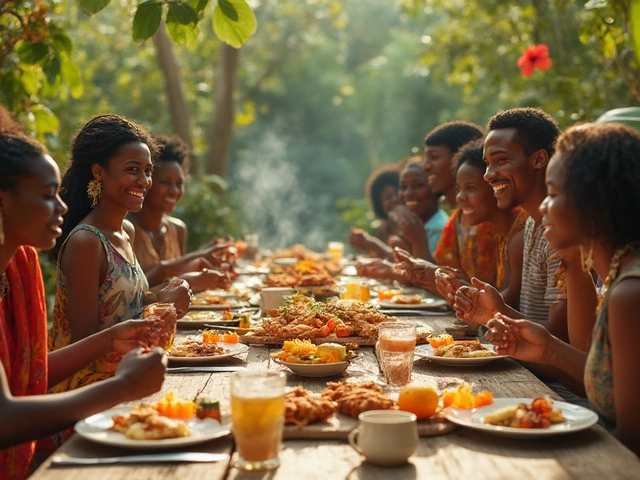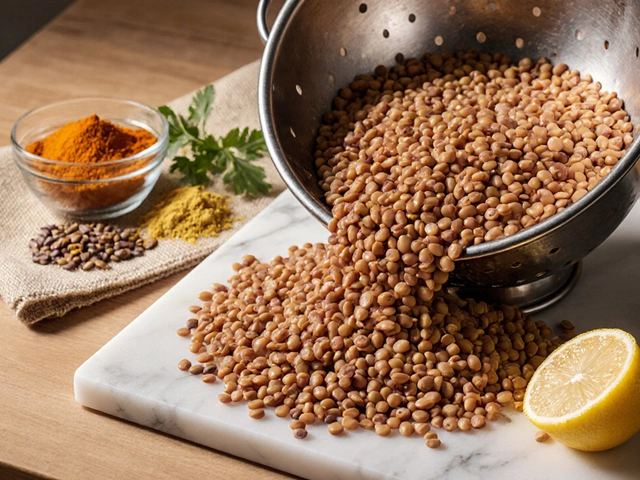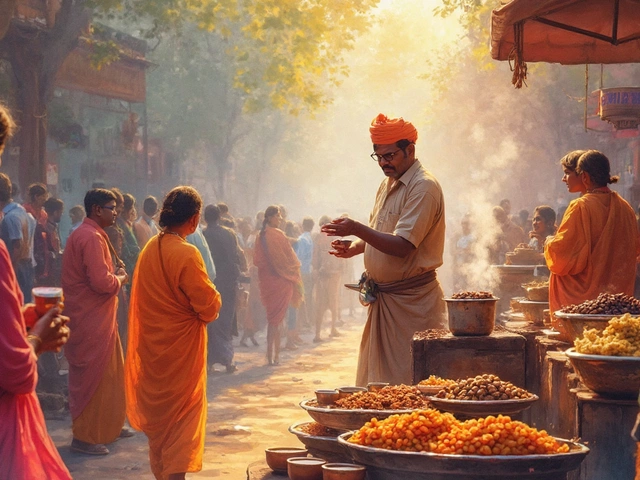Walk into the kitchen of any Indian household, and you’ll catch the aroma of milk bubbling away, destined for something delicious. But here’s what most people get wrong: not all soft Indian cheese is created equal. Paneer and chena look like twins at first glance, but they have their own personalities in taste, texture, and even in the stories they tell across India. Curious? The details will change how you cook—and eat—these creamy wonders.
What Is Paneer, and Where Does It Come From?
When people think of Indian cheese, paneer tops the list. It sweeps you off your feet with its mild flavor and firm texture. But it didn’t always exist as we know it today. Paneer owes a lot to Persian and Afghan influences. Centuries ago, layers of traders moved across India, bringing new ways of making cheese, and paneer was born somewhere around the 16th or 17th century, especially in the northern regions like Punjab and Bengal. Now, you’ll see it everywhere, from the streets of Delhi to the house parties in Cape Town—always a crowd-pleaser in dishes like palak paneer, paneer tikka, and even stuffed into flaky parathas.
The magic of paneer lies in the way it’s made. Fresh cow’s milk or buffalo milk is brought just to the brink of bubbling, then curdled gently using lemon juice, vinegar, or citric acid. As soon as the milk splits, the curds are bundled up in a muslin cloth, pressed under a weight, and left to drain. This pressing step is what gives paneer its distinctive block shape and a texture that holds up to frying, grilling, or simmering in rich gravies. Paneer is rich in protein—about 18 grams per 100 grams—which makes it a favorite with vegetarians and gym-goers alike. Unlike most Western cheeses, paneer never gets aged; you won’t find a sharp or tangy edge here. It’s also unsalted, so it becomes a blank canvas for bold spices and vibrant sauces.
If you’ve ever tried to substitute tofu in a butter masala, you know it’s not quite the same. Paneer soaks up flavor like a sponge yet stays surprisingly sturdy in a curry. Unlike chena, which practically begs to be mashed or kneaded, paneer’s firmer bite stands out. Want to judge real paneer? Look for a milky aroma and a texture that’s spongy yet never rubbery.
What about Chena? The Softer Side of Indian Cheese
Chena might sound like paneer’s twin, but it’s definitely its softer sibling. While both start from curdled milk, chena doesn’t go through the pressing and shaping ritual that’s so vital for paneer. It’s simply strained until the curds set but stays far more moist, crumbly, and pliable. Most folks in Bengal and nearby regions use chena as a base for making traditional Indian sweets, not for savory gravies.
So, what’s the backstory here? Chena has been a kitchen staple in Bengal since at least the mid-19th century. Locals started experimenting with curdled milk during colonial times when Portuguese methods of cheese-making mingled with Indian milk traditions. That’s how rasgulla (the iconic syrupy dessert) was born—thanks to soft, kneadable chena! These days, chena forms the backbone of sweets like sandesh, rasmalai, and cham-cham. Its moistness lets you knead it into doughs that turn pillowy soft when steamed or fried.
Here’s a tip if you’re trying to make chena at home: forget lemon juice, reach for vinegar instead. It gives a lighter texture. And never press it—the less you fuss, the better the chena. Chefs say the perfect chena feels grainy between your fingers but clings together when squeezed. Too dry, and your sweets will fall apart; too moist, and they’ll turn mushy.
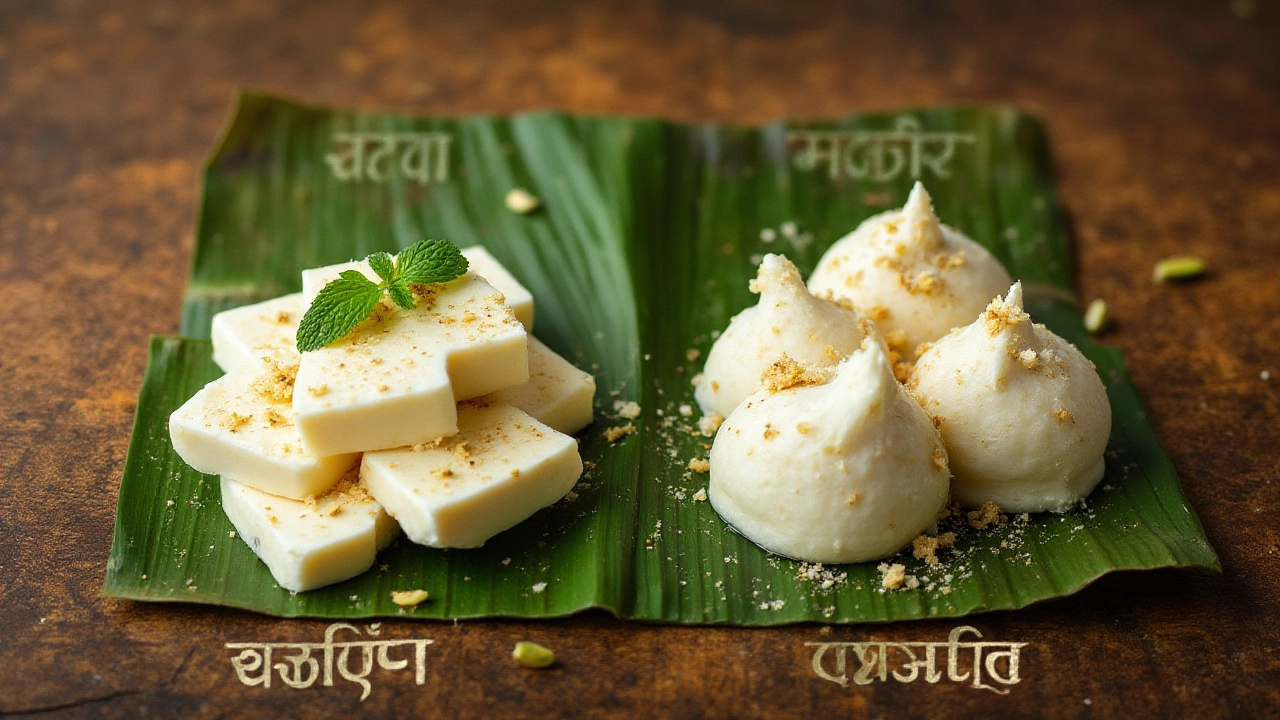
Side-by-Side: Key Differences Between Paneer and Chena
So far, so similar, right? Both start as fresh curds made from whole milk and natural acids. But everything changes after the curds form. Paneer gets pressed, chena stays loose. That one step transforms not just the texture, but even how you use them in the kitchen. Here’s a no-nonsense look at paneer vs chena:
| Aspect | Paneer | Chena |
|---|---|---|
| Texture | Firm, set into blocks, can be sliced or cubed | Moist, crumbly, soft—never forms blocks |
| Use | Mainly for savory dishes—fried, grilled, curried | Almost always used in desserts and sweets |
| Method | Curds pressed under weight to remove moisture | Only strained till soft curds remain |
| Region | North and western India | Bengal, Odisha, eastern India |
| Protein (per 100g) | About 18g | About 11g |
| Shelf Life | 2–3 days refrigerated | Best used fresh, with 1-day shelf-life |
This is why mixing them up can spell disaster. Try making a rasgulla with paneer, and it’ll never soak up the syrup. Fry paneer cubes, and they sizzle up with a golden crust—chena would melt into a puddle. It’s all about technique, and choosing the right cheese for your recipe can mean the difference between a decent meal and a showstopper.
Classic Dishes and How to Use Each Cheese
You can travel from Mumbai to Kolkata and taste hundreds of dishes that showcase just how unique paneer and chena are. If you haven’t already eaten too much, here’s where each really shines:
- Paneer rules savory land. Tikka kebabs kaboom with spice, butter masala soothes your soul, and paneer bhurji (the Indian ‘scrambled eggs’ for vegetarians) finds a place on every breakfast table. The key? Paneer’s sturdy body lets you marinate, grill, or brown it so it doesn’t fall apart. If you’ve got leftover paneer, try stuffing it into wraps or frying up spiced cubes for salads.
- Chena is the unsung queen of sweets. Bengal’s famous rasgulla—those bouncy balls floating in syrup—can only be made with fresh chena. Rasmalai (spongy cheese discs in saffron milk) and sandesh (delicate fudge) rely on the chena’s fine texture. You’ll even see chena used in deeply comforting Bengali breakfast pancakes or as a quick topping on sweet yogurt bowls.
Use this as a cheat sheet: if the recipe says to knead the cheese or mix it into a dough, you’re looking for chena. If you need cubes, slices, or a cheese that’ll hold its shape mid-curry, it’s paneer all the way.
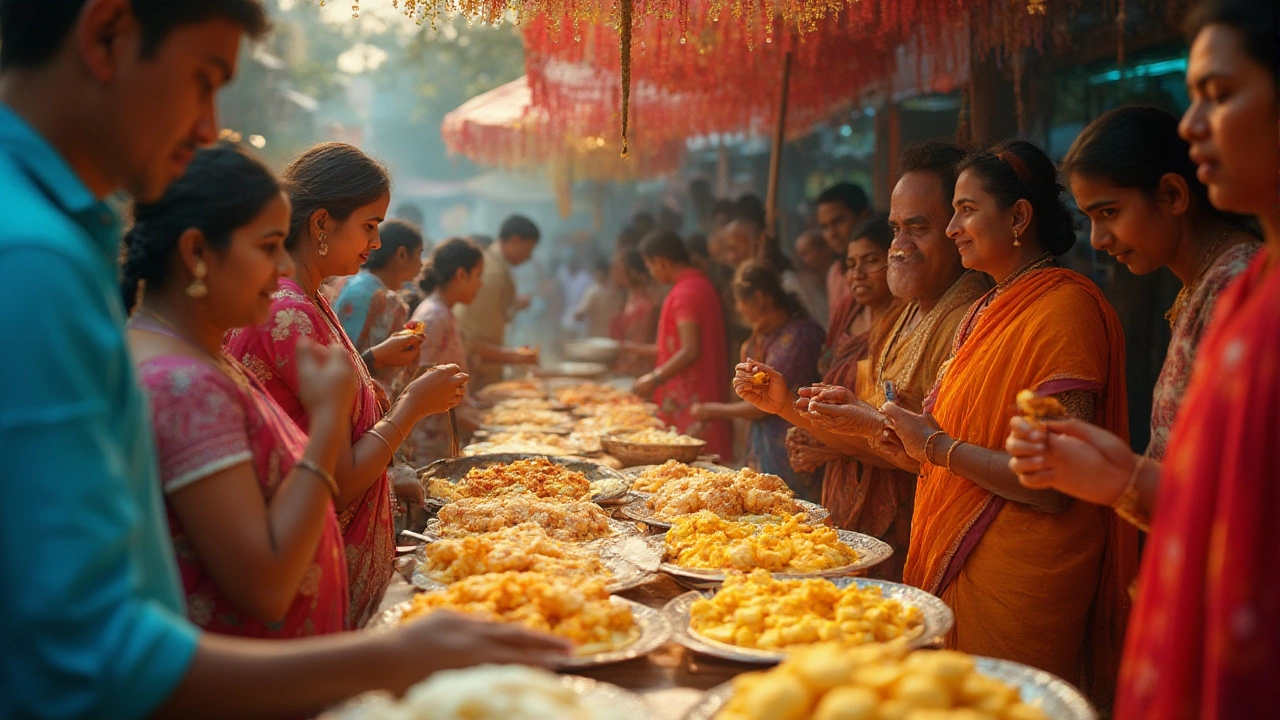
Making Paneer and Chena at Home: Tips and Troubleshooting
The cool thing is that both paneer and chena are made with just two or three ingredients—milk, acid, and maybe water. You don’t need anything fancy, but the technique makes or breaks it. Here’s how you can get it right in your own kitchen, even if you’ve never made cheese before:
- Start with fresh, full-fat milk. The richer the milk, the creamier your cheese. Don’t bother with skim or low-fat; they just won’t curdle well.
- Heat the milk until it’s almost boiling but not quite there. Stir gently, so it doesn’t scorch at the bottom.
- Reduce the heat and add a splash of lemon juice or vinegar—one tablespoon at a time. Stir slowly. Once the milk splits into white curds and watery green whey, stop adding acid.
- For chena, pouring the curds into a cloth-lined sieve and letting it drain for about 30 minutes is enough. You want it moist but not drippy. Don’t press!
- For paneer, use the same steps, but after draining, wrap it up tightly in the cloth, twist, and place a heavy weight (even a pot full of water) on top for 30–40 minutes. This step is where it firms up into a block. Cut into cubes once it’s cooled down.
People often complain about grainy or rubbery cheese. That’s almost always from overheating the milk or using too much acid. For the best results, cut the heat as soon as the milk curdles and don’t over-stir. And always rinse your curds briefly in cold water; it stops the cooking and washes away excess lemony tang.
Need to store your cheese? Paneer lasts about three days in the fridge, in a bowl of water. Chena must be used the same day for sweets, or it can sour quickly. And here's a brilliant trick from grandmothers in Kolkata: to get impossibly soft rasgullas, knead chena with a drop of rose water until it's silky before shaping it.
Ever thought about the nutritional punch? Paneer is heavier on calories and protein, making it a solid dinner option. Chena is lighter—a sweet treat that, when paired with nuts or fruits, won’t weigh you down midday. Both make for excellent vegetarian snacks, but just keep an eye on portions if you’re counting calories.
So next time you cook Indian food from scratch, check your cheese. Is it pressed or crumbly? Ready to soak up spicy gravy, or begging for a dusting of sugar? Knowing the difference between paneer and chena is like having a backstage pass to the best—and most authentic—Indian food you’ve ever tasted.
- Poplular Tags
- paneer
- chena
- Indian cheese
- curdled milk
- homemade cheese





